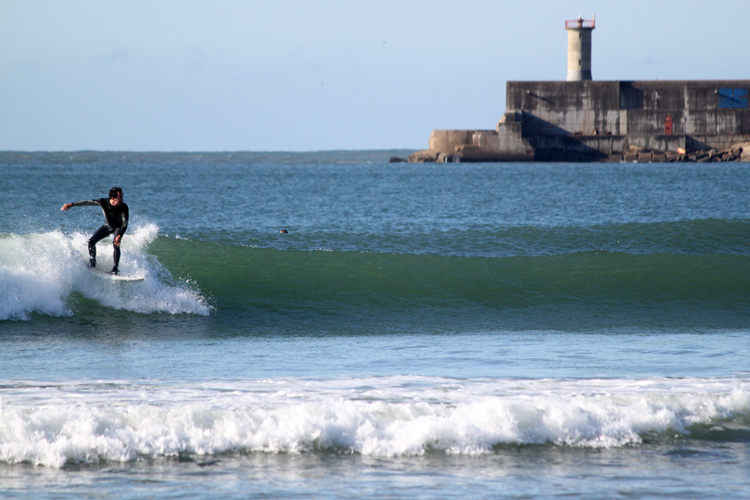It is one of the busiest surf breaks in Europe and one of Portugal's most consistent beach breaks.
But the construction of a 300-meter (985 feet) breakwater is about to put an end to decades of glorious surfing days.
The beaches of Matosinhos and Porto are connected by the same stretch of sand and are invariably associated with the history of surfing in Portugal.
Located on the northern coast, the spot attracts hundreds of national and foreign surfers every day. Some are learning to surf; others are enjoying themselves and improving their skills.
The multiple-peak surf break delivers over 300 days of quality waves per year, thanks to its bathymetric and geographic location.
Moreover, there are not many places in the world served by a subway that quickly connects the beach to the airport and the heart of a trendy and cosmopolitan city.
But the surf spot in question is also located next to the Port of Leixões, one of Portugal's major seaports.
Now, the announcement of the extension of the port's breakwater (below, in red) will likely have profound adverse effects, not only in surfing but also in all the businesses that gravitate, directly and indirectly, around this particular surf economy.
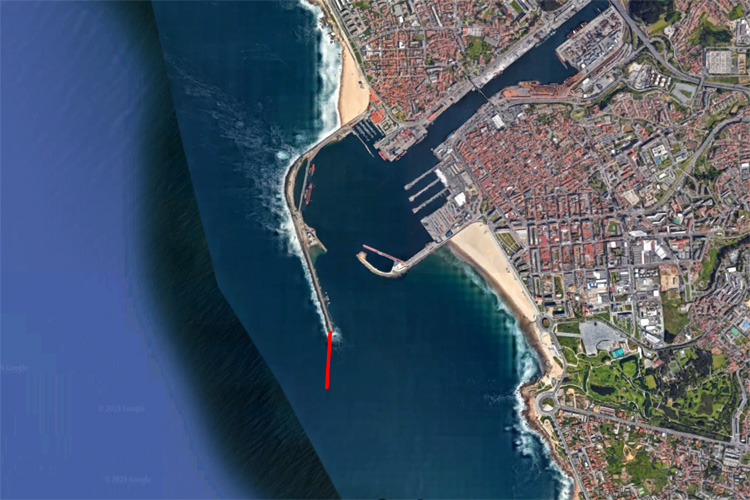
The political decision lacked public discussion and did not take into account the importance of these beaches in the lives of the 150,000 surfers that enjoy the local waves each year.
The decision will also directly affect jobs that depend on the surfing community to survive and evolve - restaurants, commerce, hotels, surf schools, surf camps, etc.
The consequences of unplanned political decisions like this one are well known and have already affected negatively several coastal communities around the world.
In this case, the urban surf breaks of Matosinhos and Porto will suffer the following consequences:
- The end of Matosinhos Beach and Porto's International Beach as prime surfing destinations: the prevailing Northwest swells will forever be blocked and will no longer be useful to the approximately 150,000 people who surf, bodyboard, kitesurf, and windsurf here every year;
- The increase of the pollution levels inside the basin: the debris coming from the Atlantic and the smell of stagnant waters will increase dramatically;
- The restrictions to bathing: the water quality will decline considerably, preventing baths during spring, summer, and autumn;
- The closure of businesses: surf schools, surf camps, cafes, restaurants, hotels, and surf shops will be forced to close their doors or reduce/dismiss employees;
- The decrease in the value of real estate assets: the reduction of the quality of life in the coastal area will make the area less appealing to live in;
Furthermore, it is impossible to predict with absolute certainty the behavior of the sand movements after the construction of such a large structure.
In the worst-case scenario, the accumulation of trapped sand in the northern zone of the basin will make entering the port even more difficult for cargo ships and cruises.
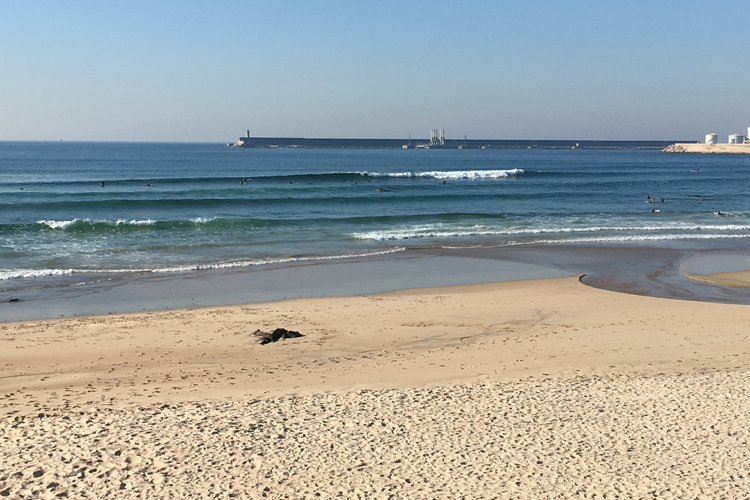
No one questions the economic interest associated with the activity of the Port of Leixões.
But in this particular case, the trade-off will be profoundly negative for people's lives and the image of Portugal as a tourist destination.
Here's an example: between 1900 and 1970, the beaches of California were used for oil extraction because, at the time, that was a highly lucrative activity.
However, from the moment coastal communities realized that tourism could generate wealth for the state and the well-being of the populations, the oil wells were gradually deactivated and removed.
Nowadays, tourism is, along with agriculture and technology, one of the three largest contributors to the California economy.
Portugal seems to be doing the opposite, even though the country's tourism sector is growing steadily.
Portuguese politicians are tempted to authorize offshore oil drilling and simultaneously overdevelop the country's port capacity.
At the same time, they believe that promoting Nazaré in New York's Time Square is compatible with heavy-industrial, pollutive activities.
The truth is that it isn't, and tourists aren't dumb.
"Nobody Knows What the Impacts Are"
The 300-meter breakwater extension was decided and announced by Ana Paula Vitorino, Portugal's minister of the sea.
The giant rocky wall will cost 147 million euros and will take five years to build. However, the minister of the sea doesn't know how the structure will impact the shoreline.
"The impacts will be studied in loco, in real-time, but nobody knows what they are or will be," says Vitorino.
That doesn't seem to be a good start.
To compensate - and probably silence - surf schools affected by the absence of waves, Ana Paula Vitorino promised to deliver two million euros so that they may be relocated. Downtown, minister?
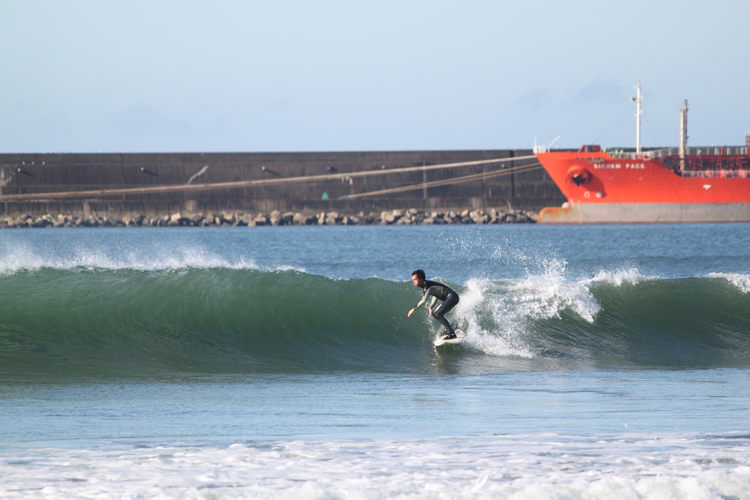
Ironically, the government's decision to build the breakwater was made on the same day that the cities of Matosinhos and Porto announced the launch of the Porto Wave Series, a local surfing circuit that has its days numbered for obvious reasons.
Both cities were fast to use surfing as a tool of self-promotion, even though they're putting an end to it in the short term.
"Those who visit us can only see the sea; they don't see borders. It's important to support surfing as a relevant activity for the region's economy and tourism," a Matosinhos City Council representative stated.
Does it sound like an incongruity? For sure. But there's more.
The city of Porto was also quick to share the news and published an article on their official website with the following title: "Surfing will bring 500 athletes and 30,000 spectators to the beaches of Porto and Matosinhos."
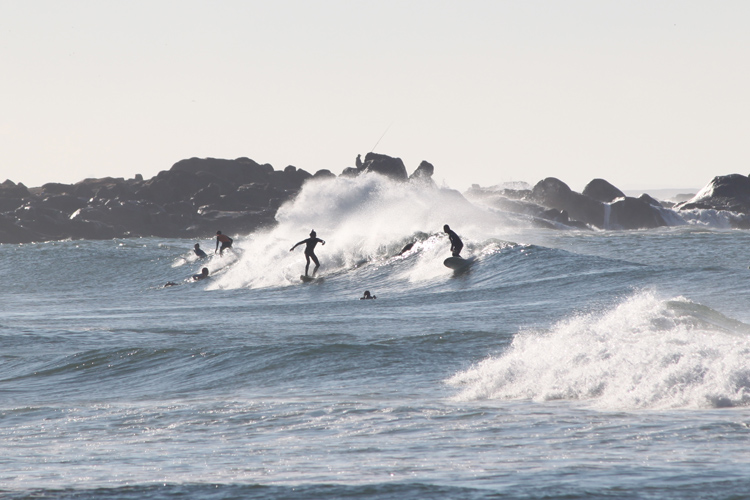
There's something wrong when you're promoting an event that will be destroyed by yourself, but this is just a detail of a broader disaster.
The extension of the breakwater of Leixões is a serious political mistake and does not take into account the overall interest of the population which, obviously, is not only economic.
Flashy Announcements and Lack of Structured, Long-Term Vision
With an unintegrated and unbalanced plan, Portugal is failing to implement a genuinely modern vision regarding the so-called economy of the sea.
Ana Paula Vitorino was also part of a government (2005-2009) that announced the construction of seven high-performance surfing centers.
Only four were built and, today, at least half of them are struggling financially.
The structures can hardly be considered "real" high-performance centers. An excellent example of a professional surf training facility is, undoubtedly, Surfing Australia's High Performance Centre.
So, in a way, several successive Portuguese governments have failed to deal with the reality of modern surfing and how it can positively impact coastal communities, socially and economically speaking.
Make no mistake: it is impossible to sell surfing and golf, sunny beaches, warm hospitality and, at the same time, promote offshore oil exploration and limitless port activity.
And you can't call yourself Europe's best holiday destination when you only keep beaches clean during summer. In a country like Portugal, pristine sands should be a national resolution.
The extension of the Leixões breakwater will put the beaches of Matosinhos and Porto on the infamous blacklist of surf spots that were forever destroyed by human intervention.
A public petition has been launched in an attempt to stop construction work.
In five years, the sunsets at Matosinhos and Porto will fall behind walls of rock and passing cruises, putting an end to a rare and virtuous place where thousands of citizens enjoyed time outdoor for decades and decades.
